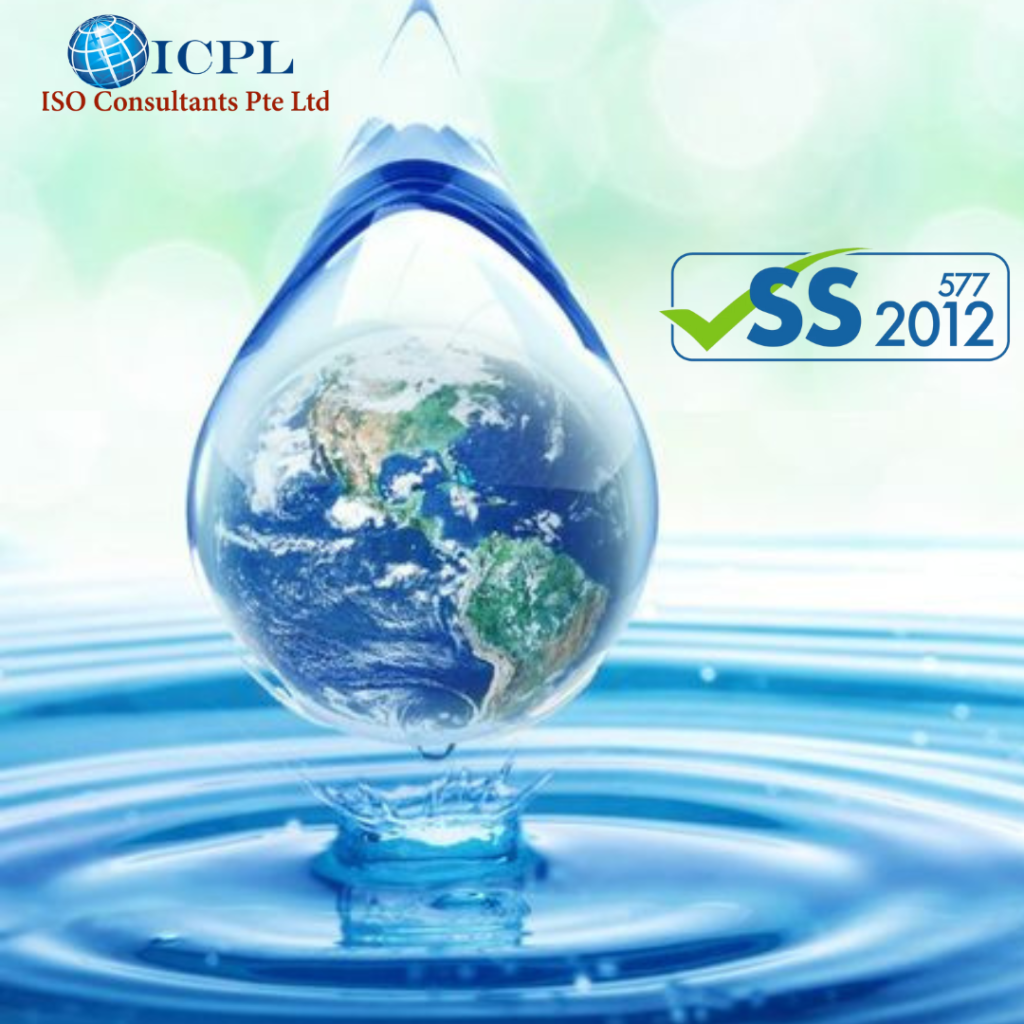SS-577-2012 Water Management in Singapore
SS-577-2012 Water Management in Singapore, PUB- together with SPRING Singapore and industry stakeholders, has developed a national standard on water efficiency management systems. The standard includes a set of frameworks and guidelines, as well as suggested tools and best practices, for water users to adopt to make improvements to their water usage and efficiency.
SS-577-2012 Water Management in Singapore specifies requirements applicable to water usage, including monitoring, measurement, documentation and reporting, design and procurement practices for equipment, systems, processes, and personnel that contribute to water efficiency. The standard facilitates organisations in Singapore to prepare their Water Efficiency Management Plan (WEMP).

Contact
- ISO Consultants Pte. Ltd. 30 Petain Rd, Singapore 208099.
- +6585993818
- info@isoconsultant.sg
Brochures
View our 2020 SS 577:2012
brochure for an easy to read guide on all of the services offer.
BENIFITS OF SS-577-2012 Water Management in Singapore
Assurance that you comply with regulatory requirements through the implementation of SS 577:2012 IN SINGAPORE
CONSULTING STAGES OF SS-577-2012 Water Management in Singapore
AWARENESS AND COMMITMENT
BUSINESS IMPACT ANALYSIS (BIA)
RISK ASSESSMENT
BUSINESS CONTINUITY STRATEGY
BUSINESS CONTINUITY PLAN (BCP) DEVELOPEMENT
TESTING AND EXERCISING
PROGRAM MANAGEMENT
- This stage involves raising awareness about BCM among senior management and staff to ensure that they understand the importance of BCM and commit to its implementation.
- The organization should establish a BCM policy and communicate it to all employees to ensure everyone is on the same page.
- This stage involves identifying critical business functions and processes, their interdependencies, and the impact of disruptions to those functions.
- The organization should prioritize critical functions, identify recovery time objectives (RTOs), and establish recovery strategies.
- This stage involves identifying and assessing potential risks that could cause disruptions to critical business functions.
- The organization should prioritize risks based on their likelihood and impact and develop risk mitigation strategies.
- This stage involves developing a business continuity strategy that outlines the steps to be taken to recover critical business functions in the event of a disruption.
- The strategy should include the activation of emergency response plans, the identification of recovery teams, and the establishment of communication channels.
- This stage involves developing detailed BCPs for each critical business function, including recovery procedures, roles and responsibilities, and communication procedures.
- The BCP should be reviewed and updated regularly to ensure its effectiveness.
- This stage involves testing the BCP to ensure that it is effective and that employees understand their roles and responsibilities.
- The organization should conduct regular tests and exercises, including simulations and tabletop exercises.
- This stage involves establishing a program management framework to ensure the successful implementation of BCM.
- The organization should appoint a BCM coordinator, establish a BCM budget, and develop performance metrics to measure the effectiveness of the BCM program.
How to Obtain SS-577-2012 Water Management in Singapore Certification for your Company?
